pictures from Reinhard Nitze, Barsinghausen, Lower Saxony, Germany
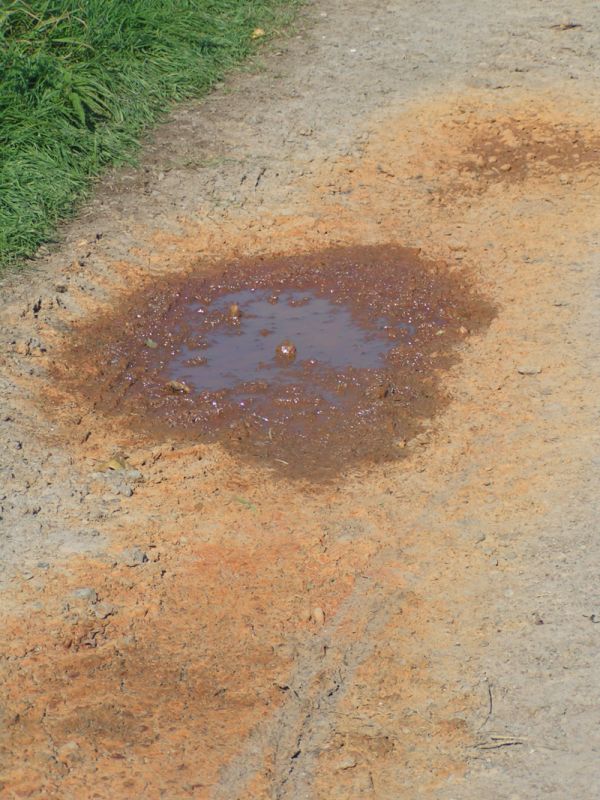
Most
of the puddles (except
the “big” one) looked like this. You can see the rusty colour
surrounding them.
This colour originates from products of decomposition which already had
dried
out.
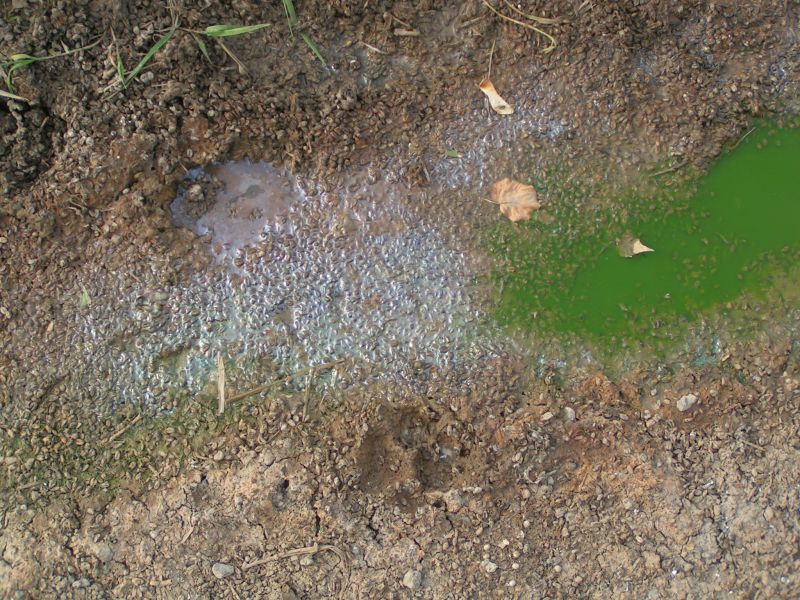
At
the fringe of the puddle
there is the decomposing grain
saturated with water. It is covered by a thin blueish-white cover of
bacteria
which has a shine of metal. This cover is missing where the water is
deeper and
the grains are beneath the surface. There the water has an intensively
green
colour caused by unicellular algae.
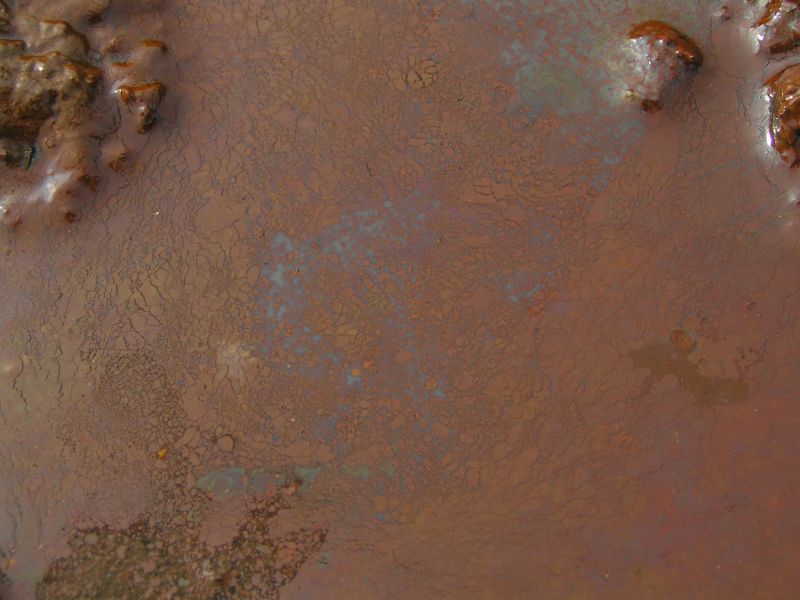
In
a smaller puddle a
relatively thick layer of bacteria has formed. The surface had been
moved
slightly and thus torn apart the orginal film of bacteria. In the gaps
and
fissures, a new generation of bacteria has formed a new film of a
different
colour.
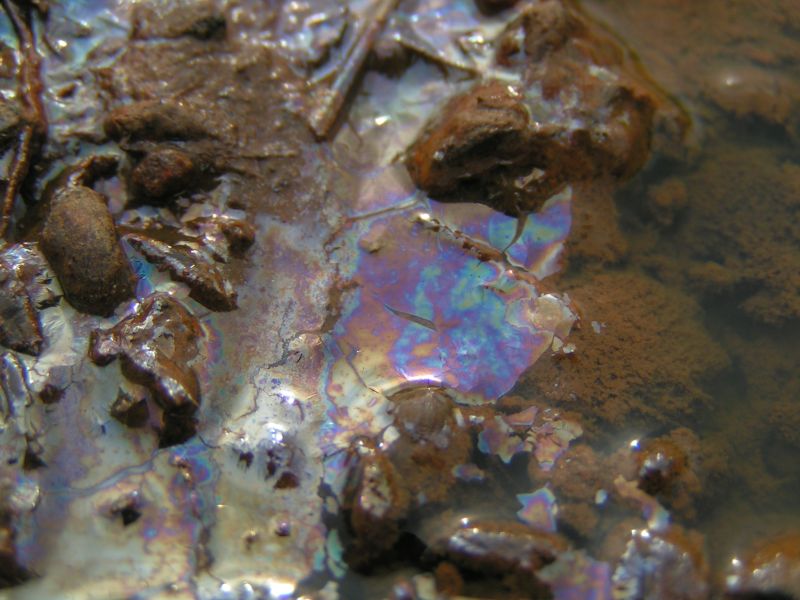
Extremely bright colours in the “big” puddle. I do not know why the colours are especially bright here. The colours were confined to a small area on the “eastern shore”. There was no direct sunlight necessary to see the colours. I could even see it better in the scattered light when there were clouds hiding the sun.
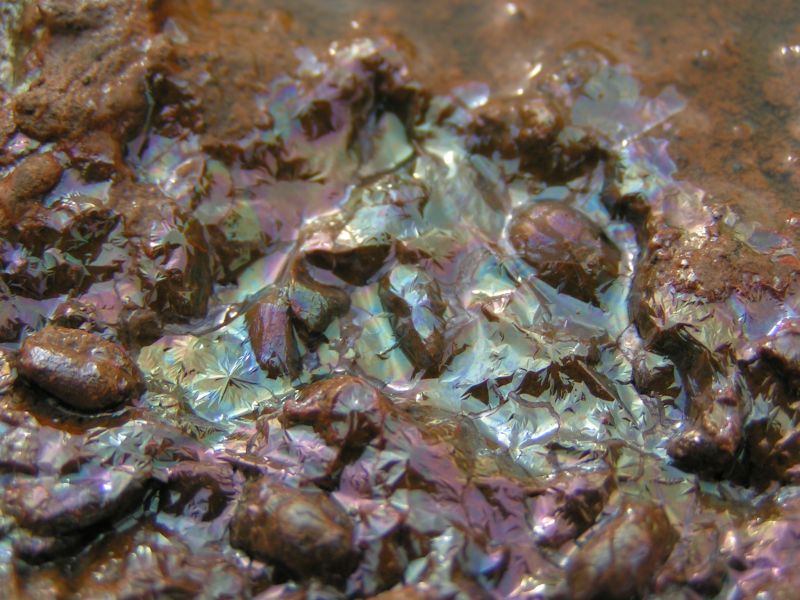
At this part of the puddle, water had evaporized and oozed away lowering the colourful film onto the grains and gravel which originally had been under water. As a result, the film of bacteria had crumpled and in parts formed structures with radial rays.
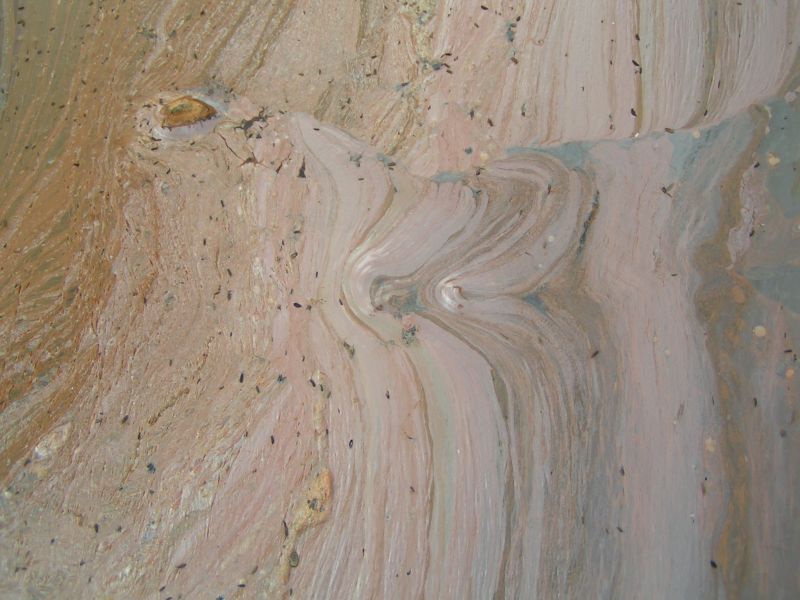
On the “north shore” of the “big” puddle, the film of bacteria had been pushed together by the wind. The structures somehow remind of the surface of Jupiter. Almost all of the black points are insects. Many of them could walk around on the film of bacteria without sinking in, but there were also some victims...
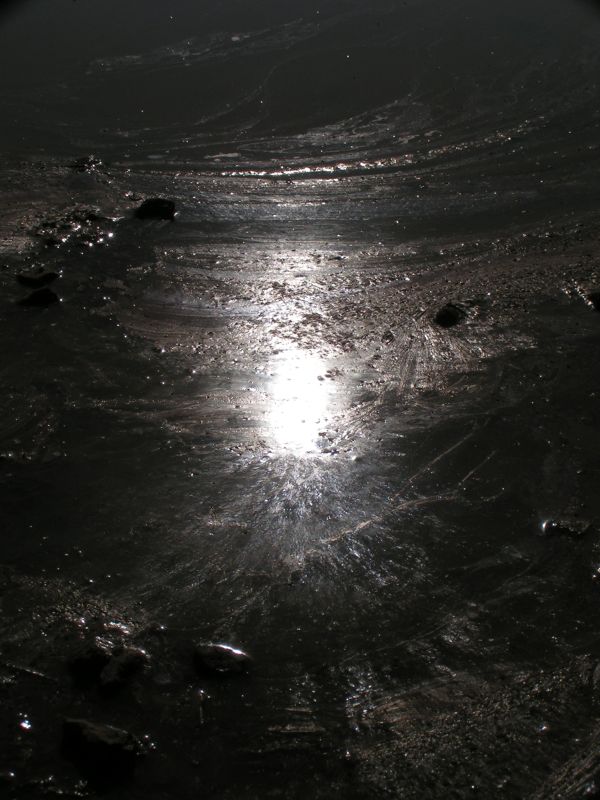
The same place as shown in picture 6, but now seen against the light. The reflected sun has a long oval shape on the film of bacteria pushed together by the wind, similar to a sun pillar.

Extremely bright colours in the “big” puddle. I do not know why the colours are especially bright here. The colours were confined to a small area on the “eastern shore”. There was no direct sunlight necessary to see the colours. I could even see it better in the scattered light when there were clouds hiding the sun.

At this part of the puddle, water had evaporized and oozed away lowering the colourful film onto the grains and gravel which originally had been under water. As a result, the film of bacteria had crumpled and in parts formed structures with radial rays.

On the “north shore” of the “big” puddle, the film of bacteria had been pushed together by the wind. The structures somehow remind of the surface of Jupiter. Almost all of the black points are insects. Many of them could walk around on the film of bacteria without sinking in, but there were also some victims...

The same place as shown in picture 6, but now seen against the light. The reflected sun has a long oval shape on the film of bacteria pushed together by the wind, similar to a sun pillar.